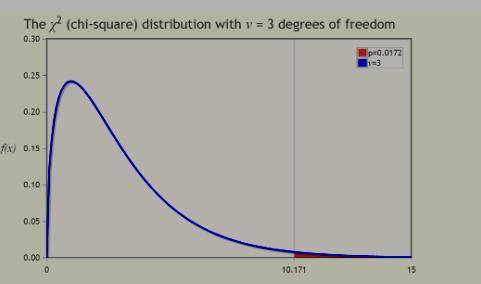
Mathematics, 11.06.2020 19:57 turtlesage21
An urban economist is curious if the distribution in where Oregon residents live is different today than it was in 1990. She observes that today there are approximately 3,109 thousand residents in NW Oregon, 902 thousand residents in SW Oregon, 244 thousand in Central Oregon, and 102 thousand in Eastern Oregon. She knows that in 1990 the breakdown was as follows:
72.7% NW Oregon, 20.7% SW Oregon, 4.8% Central Oregon, and 2.8% Eastern Oregon.
Can she conclude that the distribution in residence is different today at a 0.05 level of significance?
a) Yes, because the p-value = .0009.
b) No, because the p-value = .0009.
c) Yes, because the p-value = .0172.
d) No, because the p-value = .0172.

Answers: 3
Another question on Mathematics


Mathematics, 21.06.2019 20:30
Asunflower was 20 1/2 inches tall. over the next 6 months, it grew to a height of 37 inches tall. what was the average yearly growth rate of the height of the plzzz write a proportion i will give you 100 points
Answers: 1


Mathematics, 22.06.2019 00:30
Brent paid for 6 avocados with a $20.00 bill. he received $10.40 in change. construct and solve an equation can be used to find the price , of each avocados
Answers: 1
You know the right answer?
An urban economist is curious if the distribution in where Oregon residents live is different today...
Questions


Biology, 15.09.2021 22:30

Mathematics, 15.09.2021 22:30

Biology, 15.09.2021 22:30


Business, 15.09.2021 22:30

Chemistry, 15.09.2021 22:30





Mathematics, 15.09.2021 22:40


Chemistry, 15.09.2021 22:40



Mathematics, 15.09.2021 22:40








